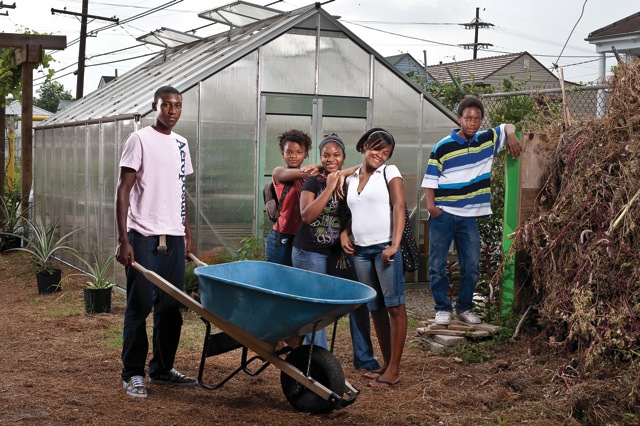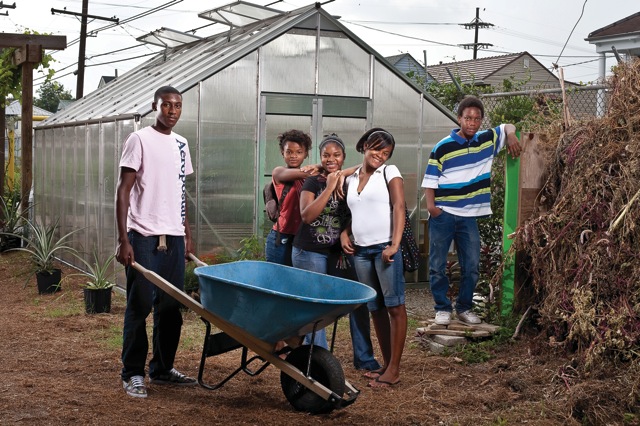After Hurricane Katrina hit New Orleans, you might have been forgiven for thinking the city had lost everything. The incompetence of government at every level was revealed, naked and shameless. The infrastructure was in ruins. The people had fled and scattered. Even after the floodwaters receded, corruption and mismanagement added to the already onerous task of rebuilding a shattered city.
Did the people of New Orleans give up? No, they did not. They pulled on their work gloves and boots, turned up the music, and got to fixing things.
 School gardens are just one of the ideas a group of New Orleans schoolkids called the Rethinkers came up with when they were helping their city rebuild.Photo: Colin M. Lenton
School gardens are just one of the ideas a group of New Orleans schoolkids called the Rethinkers came up with when they were helping their city rebuild.Photo: Colin M. Lenton
Five years later, they can be damn proud of the progress they have made. So listen up, they’ve learned some things about rebuilding their city that you could stand to know, even if you’re not living in a disaster zone. Maybe you’re living in a place that just looks and feels like a disaster zone — say, a crumbling Rust Belt city, or a foreclosure-gutted subdivision.
The new book How to Rebuild a City: Field Guide from a Work in Progress is an inspiration for anyone who wants the place they call home to be better — and knows that it’s not happening if they sit around waiting for the powers-that-be to get interested. A collection of essays, DIY guides, photos, eyewitness accounts, and resources, this little volume is as deeply idiosyncratic as New Orleans itself.
You’ll get ideas you can use on everything from the obvious — disaster preparedness — to the much less obvious, like how to construct a bus bench for your third-rate transportation system. You can read about how the children of New Orleans helped to rebuild their own schools, and how neighbors kept a bayou from becoming a garbage dump. Also, two words: “disaster branding.” Don’t think the people of New Orleans didn’t figure out how to market their misfortune. You can sell a lot of beignets that way.
At a time when the whole United States feels like it needs rebuilding, the words of the guide’s introduction really resonate:
Now you’re stuck with a colossal mess, your friends and family are scattered, some are homeless, many have lost their jobs. The future looks bleak and even more uncertain than usual….
What better time to combat entrenched social problems and advocate for change? Above all, don’t get discouraged. You can’t do it alone, but it can’t be done without you either.
Sounds like a plan.



